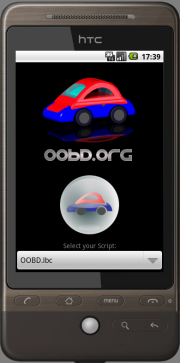Table of Contents
OOBDAndroid Installation
Two Words about Android Smartphones and OOBD
Before you go to spend money for your own Android phone especially for OOBD, there's one important thing to know: OOBD is using the Bluetooth SPP Profile to communicate like on a serial port with the Bluetooth OBD Dongle. But at least in several low cost Android phones this profile is NOT implemented (they supporting only e.g. Headsets), so you need to make sure that your device supports Bluetooth SPP, other ways OOBD-Android will not work!
After finding a device which supports SPP, another problem might occur: Several android device are affected by the so called “Device Zero” bug. This bug in the android bluetooth driver avoids, that our dongle can be found during the search process for new bluetooth devices. But as a work around there are some apps available which allows a manual pairing with a search before.
Installation:
- Install the OI Filemanager out of the Google Play Store onto your Android device
- get the latest APK of OOBDAndroid from our Download area and install it. You might get asked to allow to install software packets (like OOBD), which do not come direct out of the Play Store.

- After installation is done, go into your System Bluetooth settings. Make sure Bluetooth is switched on
- If not already done before, pair your mobile phone with the OOBD dongle, so that the dongle becomes a known device to your android device. Otherwise it would not appear in the OOBD settings.
After successfully installation, please continue in how to use OOBD

